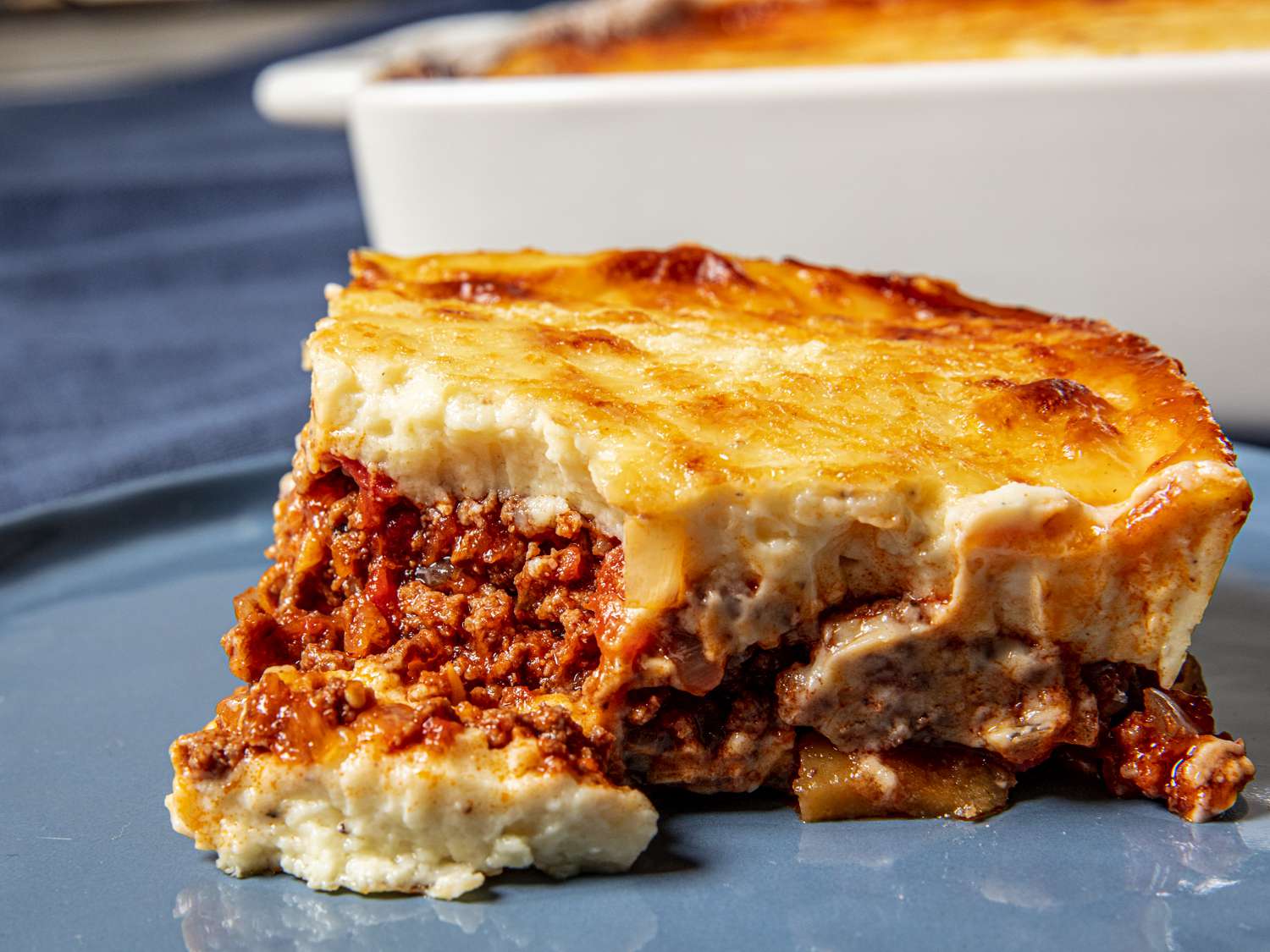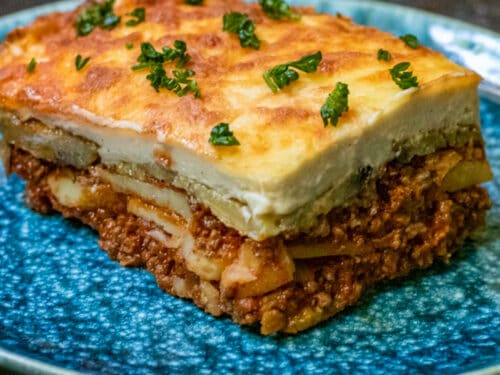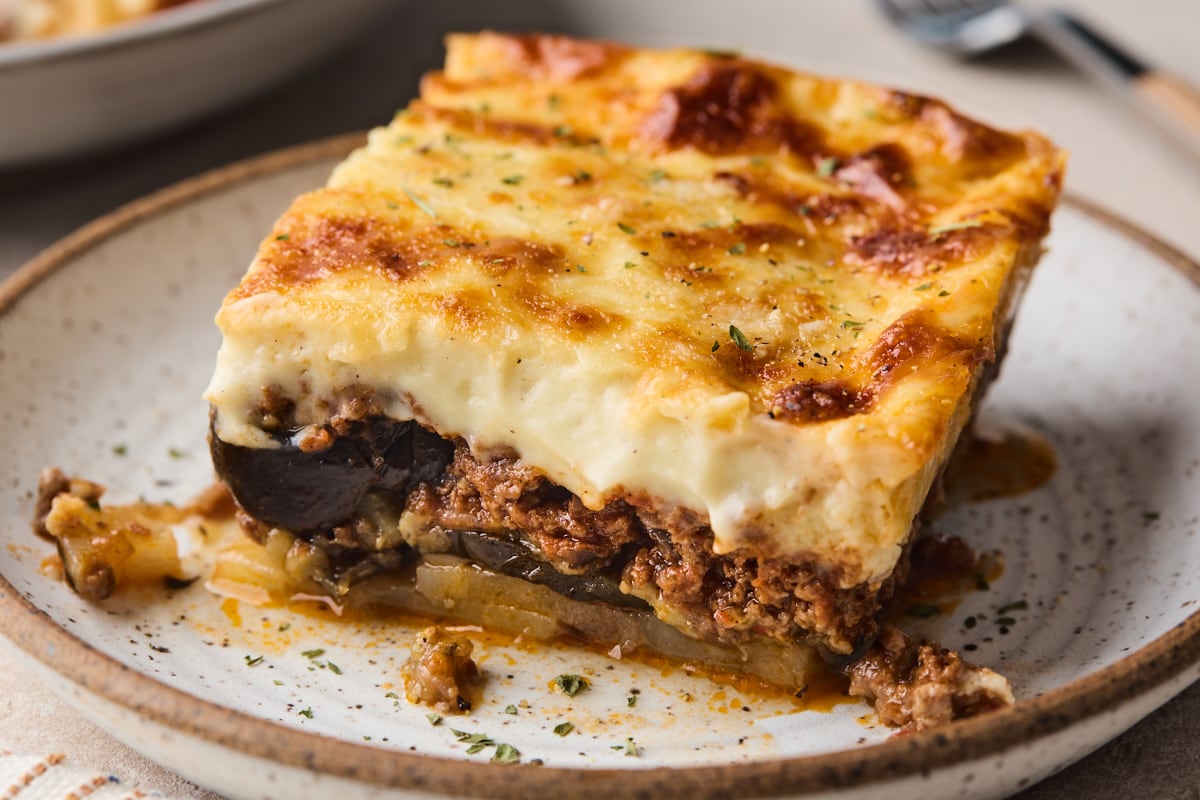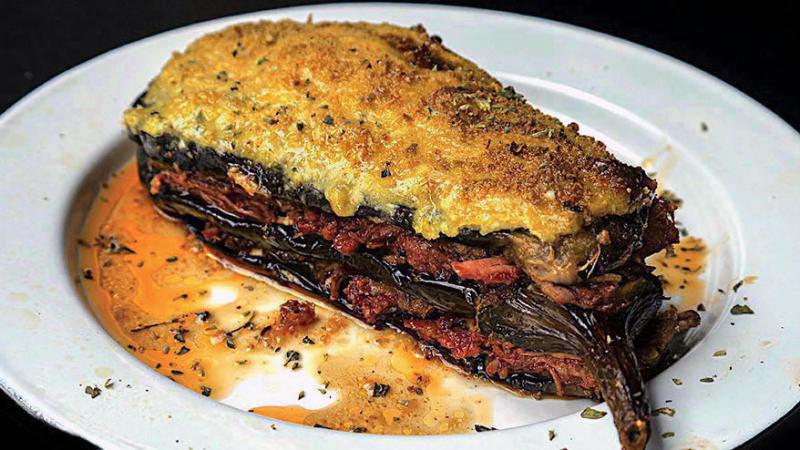Step into the world of Greek culinary comfort with a dish that’s as hearty as it is flavorful – Moussaka. Known for its layers of rich flavors and textures, moussaka has carved its place as a staple in Greek cuisine. From the aromatic layers of eggplant and spiced meat to the creamy béchamel topping, each bite is a symphony of Mediterranean taste.
As you embark on a culinary journey through Greece’s iconic dish, prepare to be transported to sun-kissed shores and cozy tavernas. Whether you’re a seasoned foodie or a curious traveler, moussaka offers a warm embrace of tradition and taste. Join us as we unravel the layers of this beloved dish, exploring its history, ingredients, and the art of creating a perfect moussaka that will leave you craving for more. Get ready to savor Greece’s layered comfort in every bite of this classic dish.
History and Origins of Moussaka
Moussaka is a dish that has a storied history, with roots that stretch back to ancient times. The concept of layering vegetables and meat can be traced to various Mediterranean cultures, but moussaka as we know it today is predominantly a Greek creation. Its origins are often debated, with some togelup historians suggesting that it was influenced by the Arabic dish “musaqqa’a,” which consists of layers of eggplant and meat. This cultural exchange underscores the rich tapestry of Mediterranean cuisine, where flavors and techniques intermingle across borders.
By the 19th century, moussaka began to take on its modern form in Greece. It was during this period that the dish started to evolve, adopting the creamy béchamel sauce that is now a hallmark of traditional recipes. Greek chef Nikolaos Tselementes is credited with popularizing the dish in the early 20th century by adding béchamel to the layered ingredients, which lent an additional richness and depth of flavor. This innovation helped to elevate moussaka from a humble peasant meal to a celebrated dish that graces tables for special occasions and family gatherings.
The dish’s appeal lies not only in its taste but also in its ability to bring people together. Moussaka is often prepared for gatherings, symbolizing hospitality and sharing within Greek culture. Whether served at a festive celebration or a cozy family dinner, this layered delight embodies the warmth and spirit of Greek cuisine. Today, moussaka is a beloved dish not only in Greece but also in many countries around the world, each embracing their own variations while paying homage to its rich heritage.

Ingredients for Traditional Moussaka
Creating the perfect moussaka begins with selecting the right ingredients. At the heart of this dish are three primary layers: eggplant, minced meat, and béchamel sauce. The eggplant serves as a tender, flavorful base, while the meat layer typically consists of minced lamb or beef, seasoned with an array of spices such as cinnamon, nutmeg, and allspice. This blend of spices not only enhances the meat’s natural flavors but also introduces the aromatic profile that characterizes authentic moussaka.
In addition to eggplant and meat, potatoes are often included as a base layer in traditional recipes. Thinly sliced and lightly fried or baked, they add a satisfying heartiness to the dish. Some variations even incorporate zucchini or other vegetables, allowing for a medley of textures and tastes. On the other hand, the béchamel sauce is made from butter, flour, milk, and eggs, creating a creamy topping that melds beautifully with the layered ingredients beneath it. The key to a successful béchamel is achieving the right consistency—smooth and velvety without being too runny or too thick.
Herbs and seasonings play a crucial role in enhancing the overall flavor of moussaka. Fresh parsley, oregano, and thyme are commonly used to infuse the meat mixture with aromatic freshness. Additionally, a splash of red wine can add depth to the sauce, complimenting the richness of the meat and the creaminess of the béchamel. By carefully selecting high-quality ingredients, one can create a moussaka that is not only delicious but also rich in cultural significance and tradition.
How to Make Moussaka – Step by Step Guide
Making moussaka at home is a rewarding experience that allows you to bring a taste of Greece into your kitchen. To start, you will need to prepare the eggplants. Begin by slicing them into thick rounds and sprinkling them with salt. This step is essential as it helps to draw out excess moisture and bitterness from the eggplants. Allow the slices to sit for about 30 minutes before rinsing and patting them dry. Once prepped, you can either fry or bake the slices until golden brown and tender. Baking is often preferred for a healthier option, while frying provides a richer flavor.
Next, it’s time to prepare the meat sauce. In a large skillet, heat some olive oil and sauté finely chopped onions until translucent. Add minced garlic and cook for an additional minute before incorporating the ground meat. As the meat browns, season it with salt, pepper, and the aromatic spices that define moussaka. Once the meat is cooked through, deglaze the pan with a splash of red wine, allowing the flavors to meld together. Finally, stir in crushed tomatoes and let the mixture simmer until thickened, creating a robust sauce that will add depth to the dish.
The final step involves assembling the layers. In a baking dish, start by layering the sliced potatoes at the bottom, followed by a layer of eggplant, then the meat sauce, and finally another layer of eggplant. Pour the prepared béchamel sauce over the top, spreading it evenly to cover the layers beneath. Bake the moussaka in a preheated oven until the top is golden and bubbly, typically around 45 minutes to an hour. Once out of the oven, allow the dish to cool for a few minutes before cutting into squares and serving. The result is a beautifully layered moussaka that is sure to impress family and friends alike.
Variations of Moussaka Around the World
While traditional Greek moussaka is undoubtedly a classic, variations of this layered dish can be found in many countries, each offering a unique twist on the original recipe. In the Middle East, for instance, the Arabic version of moussaka, known as “musaqqa’a,” typically features a tomato-based sauce with fried eggplant and chickpeas, making it a popular vegetarian option. This version often incorporates a variety of spices and herbs, reflecting the local flavor profiles and culinary traditions.
In Turkey, moussaka is made with ground meat and a tomato sauce, but the preparation may vary. Instead of béchamel, some Turkish recipes use a yogurt topping, providing a tangy contrast to the rich layers of meat and vegetables. Additionally, some versions may include potatoes or bell peppers, showcasing the diversity of ingredients available in the region. This adaptability demonstrates how moussaka has transcended its origins, evolving into a beloved dish in various cultures.
Even within Greece, regional variations exist. Some areas may use different vegetables or spices, while others may have their own unique methods of preparation. For example, in Crete, a variation known as “moussaka me patates” is popular, where potatoes take center stage as the primary base layer. This showcases the flexibility of moussaka, allowing each region to put its own spin on this comforting dish. As such, exploring the different interpretations of moussaka can be a delightful culinary adventure.

Health Benefits
Moussaka, while indulgent, can also offer several health benefits, particularly when made with fresh and wholesome ingredients. The primary components of the dish, such as eggplant, tomatoes, and lean meats, provide a wealth of nutrients. Eggplant, for instance, is rich in dietary fiber, vitamins, and antioxidants, which can promote heart health and support digestion. The inclusion of tomatoes adds a burst of flavor along with essential vitamins like Vitamin C and potassium, contributing to overall well-being.
Additionally, the use of olive oil in moussaka not only enhances the flavor but also provides healthy fats that are beneficial for heart health. Olive oil is known for its anti-inflammatory properties and is a cornerstone of the Mediterranean diet, which has been associated with numerous health benefits. When prepared with lean meats and plenty of vegetables, moussaka can be a balanced meal, offering a satisfying combination of protein, fiber, and healthy fats.
However, it’s essential to keep portion sizes in mind, as moussaka can be calorie-dense due to the béchamel sauce and the cooking methods used. Making conscious choices, such as baking instead of frying the eggplant and using lower-fat dairy in the béchamel, can help create a healthier version of this beloved dish. Ultimately, when enjoyed as part of a balanced diet, moussaka can be a delicious and nutritious addition to your culinary repertoire.
Serving and Pairing Suggestions
When it comes to serving moussaka, presentation plays a key role in enhancing the dining experience. Traditionally, moussaka is served in squares or wedges, allowing guests to appreciate the beautiful layers of eggplant, meat, and béchamel. To elevate the dish, consider garnishing with fresh herbs like parsley or oregano, which not only add a pop of color but also complement the flavors of the dish. A light drizzle of extra virgin olive oil can further enhance the presentation and taste.
Pairing moussaka with the right accompaniments can elevate the meal to new heights. A simple side salad with fresh greens, tomatoes, cucumbers, and a tangy vinaigrette can provide a refreshing contrast to the rich flavors of moussaka. Alternatively, a side of grilled vegetables or roasted potatoes can complement the dish while adding extra texture and taste. For a more substantial meal, serve moussaka alongside crusty bread to soak up the delicious juices.
No Greek meal is complete without a glass of wine. A crisp white wine, such as Assyrtiko, or a light red like Agiorgitiko, pairs beautifully with moussaka, enhancing the Mediterranean flavors. If you prefer non-alcoholic options, a refreshing lemonade or a yogurt-based drink such as Ayran can provide a delightful balance to the dish. By thoughtfully considering your serving and pairing options, you can create a memorable dining experience centered around this iconic Greek comfort food.
Where to Find Authentic Moussaka
For those eager to experience authentic moussaka, visiting Greece is undoubtedly the best way to savor this iconic dish in its homeland. In the bustling streets of Athens or the charming tavernas of Santorini, you’ll find countless establishments serving their own interpretations of moussaka. It’s worth exploring local recommendations and seeking out family-run restaurants, as these often offer the most genuine and flavorful versions of the dish, prepared with love and tradition.
If you’re unable to travel to Greece, many cities around the world boast excellent Greek restaurants that serve authentic moussaka. Look for establishments that focus on traditional recipes and use high-quality ingredients. Reading reviews and asking locals can lead you to hidden gems where you can indulge in this layered comfort food. Additionally, some Greek festivals and cultural events may feature food stalls or pop-up restaurants that showcase moussaka, providing an opportunity to taste this beloved dish outside of Greece.
For those who enjoy cooking, you can also find pre-packaged moussaka in specialty grocery stores or Mediterranean markets. While these may not rival a freshly made version, they can offer a convenient way to enjoy the flavors of Greece at home. Alternatively, consider joining a cooking class focused on Greek cuisine, where you can learn the art of moussaka-making from experienced chefs and gain insights into traditional cooking techniques.

Tips for Perfecting Your Moussaka
Creating the perfect moussaka requires attention to detail and a passion for cooking. One essential tip is to allow the eggplant to release its moisture by salting it before cooking. This not only removes bitterness but also helps achieve a tender texture. Additionally, be patient when layering the ingredients. Ensure each layer is evenly spread and leveled to create a harmonious balance of flavors.
Another important aspect is the béchamel sauce. To achieve a smooth and creamy consistency, whisk constantly while cooking the flour and butter mixture before gradually adding the milk. Avoid lumps by ensuring that the milk is added slowly and that the mixture is stirred continuously. Adding a pinch of nutmeg to the béchamel sauce can elevate the flavor, imparting a warm and aromatic note to the final dish.
Lastly, allow the moussaka to rest for a few minutes after baking before serving. This resting period helps the layers set, making it easier to cut and serve. The flavors will also have time to meld together, resulting in an even more delicious dish. By following these tips and embracing the cooking process, you can create a moussaka that not only looks stunning but also delights the palate with every bite.
Conclusion: Why Moussaka is a Must-Try Dish
In conclusion, moussaka is more than just a dish; it is a celebration of Greek culture, tradition, and culinary artistry. Its layered composition, combining tender eggplant, savory meat, and creamy béchamel, creates a symphony of flavors that warms the heart and nourishes the soul. As you delve into the history, ingredients, and preparation of moussaka, you’ll discover the rich stories behind this iconic dish, reflecting the spirit of the Mediterranean and the love of family gatherings. If you like reading this article then please consider visiting kaijuphile to find more article like this.

